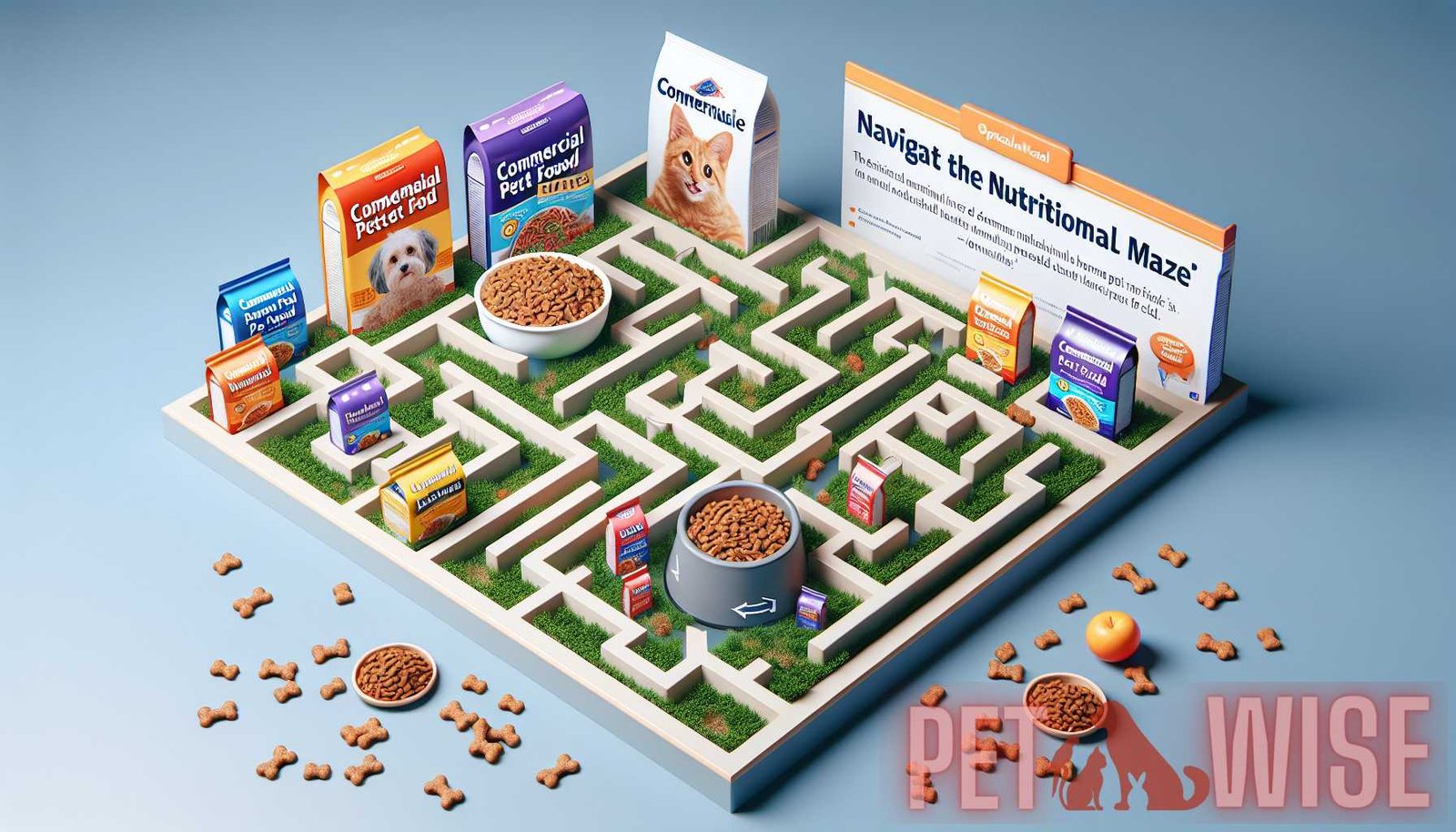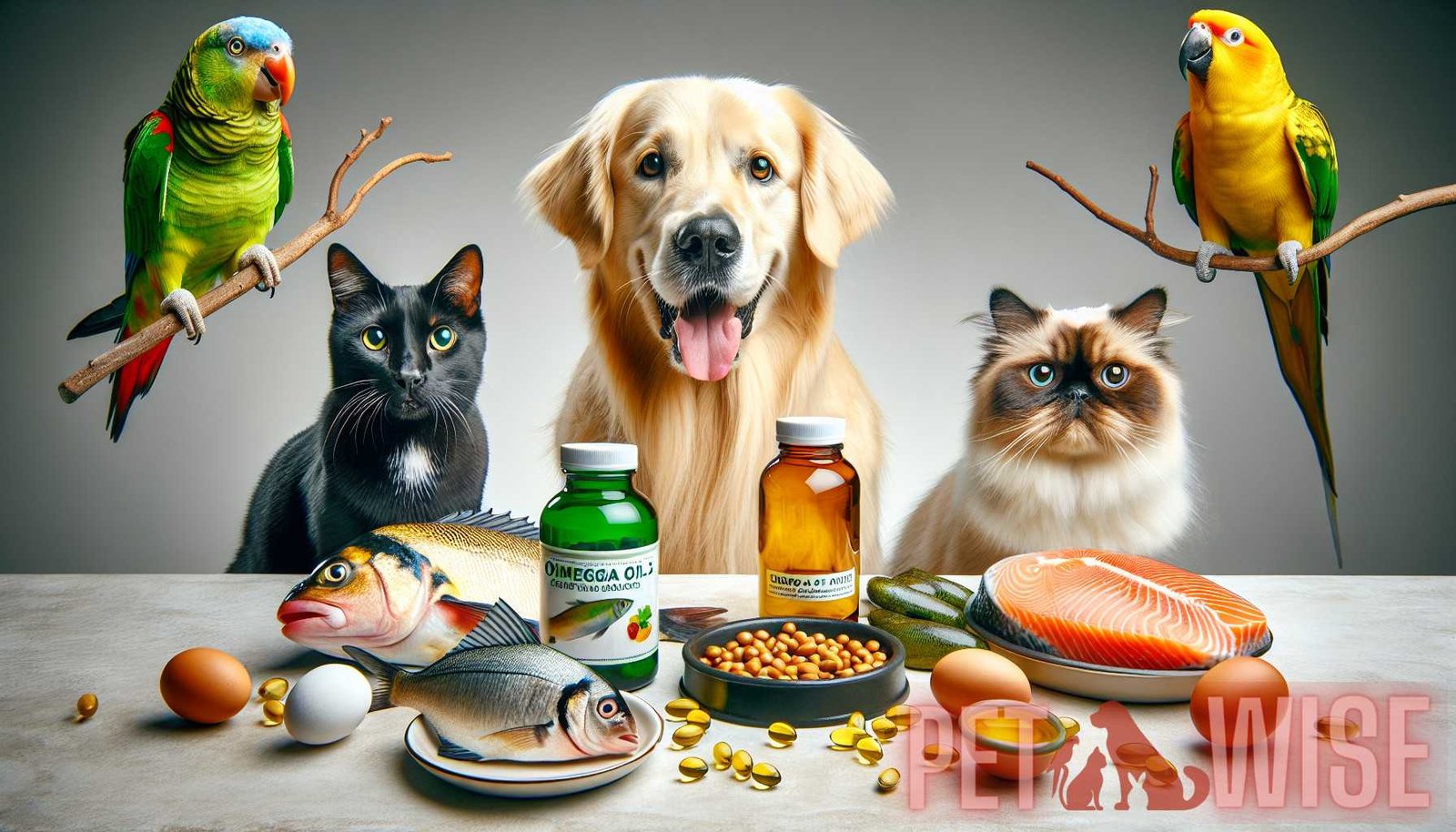Navigating the Nutritional Maze: A Comprehensive Guide to Optimal Pet Health and Digestion
Welcome to our comprehensive guide to pet nutrition, where we will explore the intricacies of feeding your beloved furry friends. As pet owners, it is our responsibility to ensure that our pets receive the optimal nutrition they need to live a healthy and fulfilling life. With so many options available in the market and conflicting information from various sources, navigating the nutritional maze can be overwhelming. In this guide, we will provide you with the knowledge and tools to make informed decisions about your pet’s diet, ensuring their optimal health and digestion.
Understanding the Basics of Pet Nutrition
Just like humans, pets require a balanced diet that provides them with the necessary nutrients to thrive. The key nutrients that pets need include:
- Proteins: Proteins are the building blocks of life and are essential for the growth, repair, and maintenance of tissues in your pet’s body.
- Carbohydrates: Carbohydrates provide energy for your pet’s daily activities and should come from high-quality sources such as whole grains and vegetables.
- Fats: Fats are a concentrated source of energy and are important for the healthy functioning of your pet’s cells, as well as the absorption of certain vitamins.
- Vitamins and Minerals: These micronutrients are essential for various bodily functions, including immune system support, bone health, and overall well-being.
- Water: Adequate hydration is crucial for your pet’s overall health and digestion. Ensure that fresh, clean water is always available for your pet.
It’s important to note that different pets have different nutritional needs. Factors such as age, breed, size, activity level, and any underlying health conditions should be taken into consideration when determining the appropriate diet for your pet. Consulting with a veterinarian is highly recommended to ensure that your pet receives customized nutritional advice.
Choosing the Right Pet Food
When it comes to pet nutrition, choosing the right food is of utmost importance. Here are a few key factors to consider when selecting pet food:
1. Reading the Label
The first step in choosing the right pet food is to carefully read the label. Look for clear and transparent ingredient lists that provide detailed information about the ingredients used. Avoid foods that contain artificial additives, preservatives, and fillers. Opt for products that use high-quality, whole food ingredients.
2. Checking for Adequate Protein Content
Protein is the most important nutrient for pets, as it provides the necessary amino acids for growth and repair. Ensure that the pet food you choose has a high protein content, ideally from animal sources.
3. Considering the Life Stage of Your Pet
Pets have different nutritional requirements at different stages of their lives. Ensure that the pet food you choose is appropriate for your pet’s life stage, whether they are a puppy, adult, or senior.
4. Researching the Manufacturer
Research the manufacturer of the pet food to ensure that they have high-quality standards and a good track record. Look for manufacturers that conduct rigorous testing and have a team of veterinary nutritionists to formulate their products.
5. Considering Dietary Restrictions or Allergies
If your pet has specific dietary restrictions or allergies, it’s important to choose a pet food that meets their needs. There are many specialized diets available for pets with sensitivities or certain medical conditions.
6. Seeking Recommendations from Your Veterinarian
Your veterinarian is your best resource when it comes to choosing the right pet food for your furry friend. They can provide personalized recommendations based on your pet’s specific needs.
The Importance of Feeding Guidelines
Feeding guidelines provided by pet food manufacturers are not one-size-fits-all. These guidelines should be used as a starting point, but adjustments may be necessary based on your pet’s individual needs. Factors such as age, weight, activity level, and metabolism should be taken into consideration when determining the appropriate portion size for your pet.
It’s important to monitor your pet’s body condition and adjust their food intake accordingly. Overfeeding can lead to obesity, while underfeeding can result in malnutrition. Regularly consult with your veterinarian to ensure that your pet is maintaining a healthy body weight.
The Pros and Cons of Commercial Pet Food

Commercial pet food is the most convenient option for most pet owners, but it’s important to weigh the pros and cons before making a decision. Here are some advantages and disadvantages of commercial pet food:
Advantages:
- Convenience: Commercial pet food is readily available and easy to serve.
- Complete and Balanced Nutrition: High-quality commercial pet foods are formulated to provide all the necessary nutrients your pet needs.
- Cost-Effective: Commercial pet food comes in a range of prices, allowing you to choose an option that fits your budget.
- Veterinary Oversight: Reputable pet food manufacturers have veterinary nutritionists on staff to ensure that their products meet high nutritional standards.
Disadvantages:
- Ingredient Quality: Not all commercial pet foods are created equal. Some may contain low-quality ingredients, fillers, and artificial additives.
- Processing Methods: The processing methods used in commercial pet food production can result in nutrient loss.
- Individual Variability: Each pet is unique, and their nutritional needs may vary. Commercial pet foods may not cater to individual variations.
It’s important to research different brands and select a reputable one that offers high-quality products. Your veterinarian can provide recommendations based on your pet’s specific needs.
Alternative Options: Homemade and Raw Diets
Some pet owners prefer to feed their pets homemade or raw diets. While these options can offer certain advantages, they also come with potential risks. Here’s what you need to know:
Homemade Diets:
Pros:
- Control Over Ingredients: Preparing homemade diets allows you to have complete control over the quality and composition of the ingredients.
- Customization: Homemade diets can be customized to meet your pet’s specific needs and dietary restrictions.
- Fresh Ingredients: Homemade diets often use fresh ingredients, providing your pet with a variety of nutrients.
Cons:
- Nutritional Imbalance: Preparing balanced homemade diets requires careful planning and knowledge of pet nutrition to ensure that all nutrient requirements are met.
- Time and Effort: Preparing homemade diets can be time-consuming and may require extra effort.
- Risk of Contamination: Improper handling and storage of homemade diets can result in the growth of bacteria and other pathogens.
Raw Diets (BARF or Biologically Appropriate Raw Food):
Pros:
- Natural Approach: Raw diets aim to mimic the natural diet of dogs and cats, which is primarily composed of raw meat, bones, and organs.
- Potential Health Benefits: Advocates of raw diets claim that it can improve coat quality, dental health, and overall well-being.
Cons:
- Risk of Bacterial Contamination: Raw meat and other ingredients used in raw diets can be a source of harmful bacteria, such as Salmonella and E. coli, which can pose risks to both pets and humans.
- Nutritional Imbalance: Raw diets require careful formulation to ensure that all essential nutrients are provided in the right proportions.
- Handling and Storage: Proper handling and storage of raw diets are essential to minimize the risk of bacterial contamination.
Before opting for a homemade or raw diet, consult with your veterinarian to ensure that it is appropriate for your pet and that all necessary precautions are taken to mitigate potential risks.
The Role of Supplements in Pet Nutrition

Supplements can play a role in enhancing your pet’s nutrition, but it’s important to use them judiciously. Here are some common supplements used in pet nutrition:
1. Omega-3 Fatty Acids:
Omega-3 fatty acids, such as those found in fish oil, can have a variety of health benefits for pets, including improved skin and coat health, reduced inflammation, and enhanced cognitive function. Consult with your veterinarian to determine the appropriate dosage for your pet.
2. Probiotics:
Probiotics are beneficial bacteria that can promote a healthy gut microbiome in pets. They are often used to support digestive health and strengthen the immune system. Choose a high-quality probiotic specifically formulated for pets.
3. Joint Supplements:
Joint supplements, such as glucosamine and chondroitin, can help support joint health in pets, especially those with arthritis or joint-related issues. Talk to your veterinarian to determine whether joint supplements are appropriate for your pet.
4. Multivitamins:
Multivitamins can be used to fill in any potential nutritional gaps in your pet’s diet. However, it’s important to choose a high-quality product specifically formulated for pets and to use them under veterinary guidance.
It’s important to note that supplements should never replace a balanced diet. They should only be used if there is a specific need and under the guidance of a veterinarian.
Common Pet Nutrition Myths Debunked
Myth 1: Grain-Free Diets are Always Better
Contrary to popular belief, grain-free diets are not always better for pets. While some pets may have grain sensitivities, grains themselves are not inherently bad for pets. The most important factor is the quality of ingredients and the nutritional balance of the diet.
Myth 2: All Raw Diets are Safe and Healthy
Raw diets can have potential health benefits, but they also carry risks. Raw meat and other ingredients used in raw diets can be a source of harmful bacteria, and careful handling and storage are necessary to minimize these risks.
Myth 3: Dry Food is Better for Dental Health
While dry food may help mechanically clean the teeth, it’s not a substitute for proper dental care. Regular teeth brushing, dental chews, and professional dental cleanings are essential for maintaining good oral health in pets.
Myth 4: Human Food is Always Harmful to Pets
While there are certain foods that are toxic to pets, such as chocolate, onions, and grapes, there are also many human foods that can be incorporated into a pet’s diet in moderation. Consult with your veterinarian to determine which human foods are safe for your pet.
The Future of Pet Nutrition
The field of pet nutrition is continually evolving as our understanding of pet’s nutritional needs grows. Scientists and veterinarians are constantly researching and developing new techniques and products to optimize pet health through nutrition.
One area of active research is the study of nutrigenomics, which explores the interaction between nutrition and gene expression. This field aims to uncover how specific nutrients can influence gene expression and how this knowledge can be used to develop targeted nutritional strategies for pets with specific health conditions.
Another emerging trend in pet nutrition is the use of functional foods and nutraceuticals. These are food products that provide health benefits beyond basic nutrition. For example, ingredients such as antioxidants, probiotics, and phytochemicals are being incorporated into pet food to enhance health and promote wellness.
As pet owners, it’s important to stay informed about the latest research and advancements in pet nutrition. Regularly consulting with your veterinarian and keeping up to date with reputable sources of information will ensure that you are providing the best possible nutrition for your furry friend.
Conclusion
Navigating the nutritional maze can be challenging, but armed with the right information and guidance, you can make informed decisions about your pet’s diet. Remember to consider your pet’s individual needs, consult with your veterinarian, and choose high-quality pet food that provides balanced nutrition. Whether you opt for commercial pet food, homemade diets, or raw diets, it’s essential to prioritize your pet’s health and well-being. By nourishing your pet with a nutrient-rich diet, you will be supporting their optimal health and digestion for years to come.
For more information on pet nutrition and tips on feeding your pet, visit our articles on pet nutrition and fulfilling nutritional needs for your adorable puppy.


